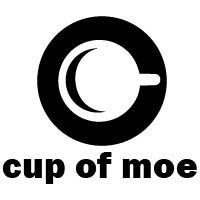We may earn money or products from the companies mentioned in this post.
Clive Barker’s 1987 “Hellraiser” (our review) shines with its exquisite effects, score, and original concept. Its sequel, “Hellbound: Hellraiser II” provides a convincing follow up that manages to surpass its phenomenal predecessor.
“Hellbound: Hellraiser II” begins with a brief Pinhead (Doug Bradley) origin story. British military officer Elliott Spencer (Bradley) solves the Lament Configuration puzzle box, opening a doorway to the realm of the Cenobites and subsequently transforming into a Cenobite. Flash forward to present day, immediately following the events of the original “Hellraiser.” Kirsty Cotton (Ashley Laurence) has been committed to a psychiatric hospital. Run by Doctor Channard (Kenneth Cranham) and his assistant, Dr. Kyle MacRae (William Hope), Kirsty recounts the horrors of the Cenobites. Upon learning that many items from her father’s house, including a bloody mattress, have been recovered as evidence by law enforcement, Kirsty begs Channard to destroy the mattress. She’s convinced that her conniving stepmother, Julia Cotton (Clare Higgins), who died upon it, may be resurrected while it’s still in existence.
It’s MacRae who believes Kirsty, despite the absurdity of her claims. However, Kyle discovers that Channard has long searched for the Lament Configuration. Channard sends for the mattress, and rather than destroying it, resurrects Julia.
“Hellraiser II” features much the same atmosphere as the 1987 classic. The character of Kirsty remains the protagonist, and in “Hellbound” she’s decidedly stronger despite the trauma of battling the Cenobites. Whereas much of the first film transpired on earth, “Hellbound” spends most of its third act in the Labyrinth of Hell, where the Cenobites reside. It’s a sprawling, twisted funhouse with an M.C. Escher-seque vibe. It’s fascinating witnessing the lair of the Cenobites, replete with the malevolent god Leviathan, which Julia describes as “god of flesh, hunger, and desire.”
Similarly, the subplot about Spencer’s transformation into Pinhead offers some insight into the Cenobites’ creation. Once human, the Cenobites eventually forget their former humanity. This becomes important in the finale of “Hellbound: Hellraiser II.” Further, “Hellbound” not only presents the origin of Pinhead but delves into the Cenobite mythos. When a young girl, Tiffany (Imogen Boorman) opens the puzzle box, the Cenobites prepare to torture her. Yet Pinhead intervenes explaining that “It is not hands that summon us. It is desire.” However, this seems to directly contradict what occurred when Kirsty opened the box in “Hellraiser,” as Kirsty opened the box out of curiosity, not desire. As a villain, Pinhead is remarkably intelligent. He’s more prone to monologue than murder, though Pinhead certainly doesn’t hold back from flinging chains and hooks about. Kirsty is likeable protagonist, made all the stronger through evading the Cenobites and her murderous stepmother.
Tony Randel assumes directorial control, taking over from Clive Barker. Christopher Young returns to score “Hellbound,” which, like “Hellraiser,” riffs with a booming, orchestral sound. Again, “Hellbound” explores the fine line between pleasure and pain, heaven and hell. While the Labyrinth of Hell is torture for Frank Cotton (Sean Chapman), it’s the ideal playground for Dr. Channard.
During the mid part of “Hellbound,” it slightly deviates into the same territory as “Hellraiser.” The plotline where Channard brings Julia back, then helps her regenerate her body is pretty much what occurs in the first film, albeit eschewing most of the setup and skipping mostly from resurrection to full-bodied Julia. Still, it drags a bit in the middle, before the ultimately fascinating romp through the Labryinth of Hell.
“Hellbound: Hellraiser II” arguably bests its predecessor with a sprawling, macabre vision, superb effects, and a magnificent score. The unified vision presents a gripping show which explores the dichotomy of pain and pleasure, while lending a backstory to both Pinhead and the Cenobites.
This post may contain affiliate links. We are a participant in affiliate programs such as the Amazon Services LLC Associates Program, an affiliate advertising program designed to provide a means for us to earn fees by linking to Amazon.com and affiliated sites. However, all products are thoroughly tested and reviews are honest and unbiased.

